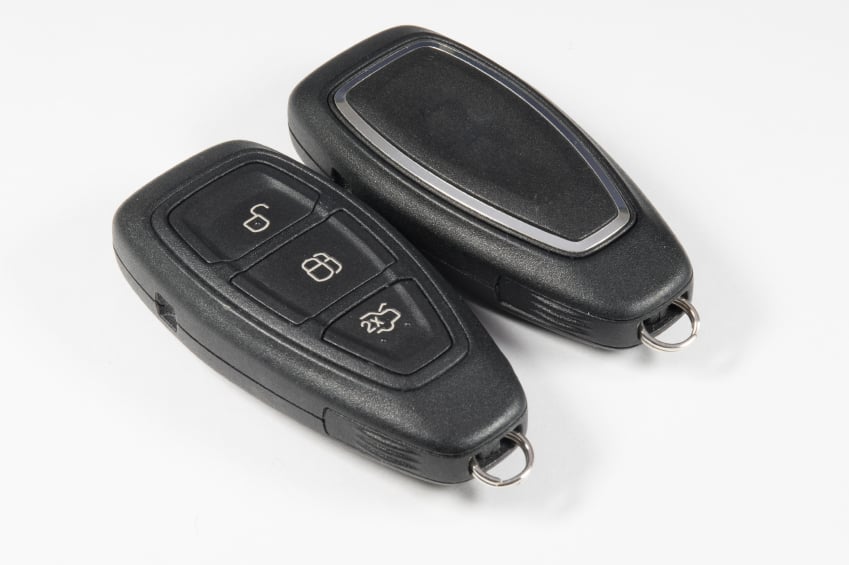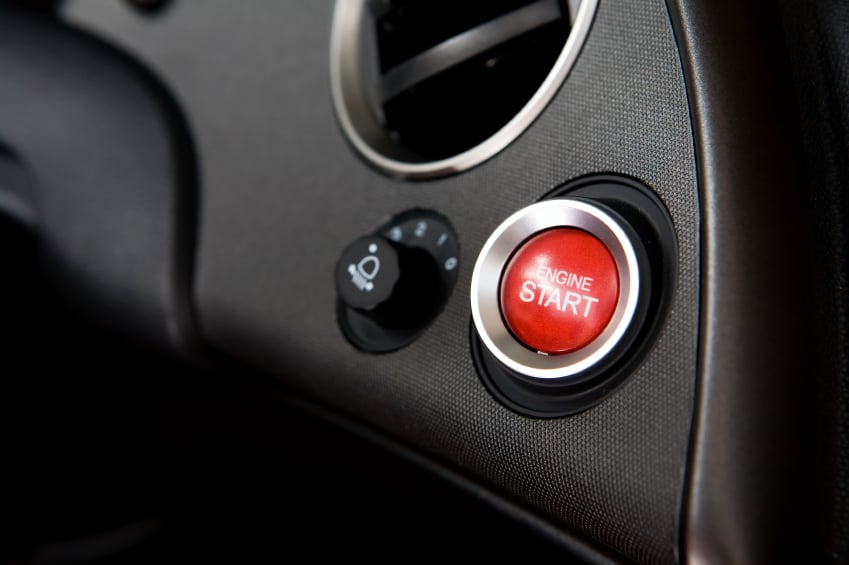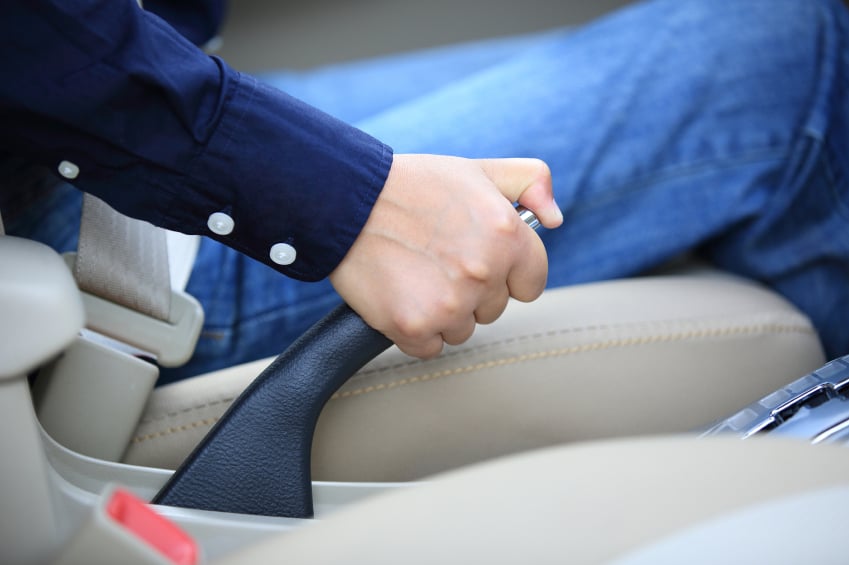A keyless ignition system — also called a smart key — is a method of electronic access and authorization of an entry and ignition system that’s available as an option or standard in several cars.
The first smart key was developed by Siemens in 1995, and introduced by Mercedes-Benz under the name “Key-less Go” in 1998 on the W220 S-Class following its design patent filed by Daimler-Benz on May 17, 1997.
Although keyless ignition systems have been around for 20 years and are available on autos of all makes and models, and at all price points, there are some concerns about safety and security.
There have been several reports noting that keyless ignition systems are more vulnerable to hacking than vehicles that use traditional metal keys. If this is a concern for you, talk to your car dealer about vulnerabilities with the specific model that you’re looking at or that you own.
Here are five key facts from Safercar.gov that you need to know about keyless ignition systems:

With a keyless ignition system, the driver no longer carries a key. Instead, he or she carries a fob that sends out a radio signal that authorizes the car to start, either with a push of a button or the turning of a switch. (Photo: iStock)
1. What is a keyless ignition system?
In some cases, the same key fob provides keyless entry, keyless ignition and an immobilizer system that keeps car thieves from stealing your vehicle as well as allowing you to start it without a traditional key.
The keyless entry and immobilizer system operate generally the same way. As explained by the web site How Stuff Works, a keyless-entry fob is a standard radio-transponder.
Inside the fob is a circuit board, a radio transmitter, a battery and an antenna. As you approach your vehicle — within 5 to 10 feet generally — you can press the button to unlock your doors — pretty common on most vehicles in 2016. The radio frequency identification chip (RFID) in the fob sends out a code of 40 impulses broadcast on different frequencies. The corresponding RFID chip in the car receives this code and accesses the vehicle’s software to find out whether the code is the right one. If it is, the doors unlock.
Keyless entry is considered an active RFID system, because pushing the button sends out the code, instead of receiving it. The immobilizer chips in the ignition keys that lock out car thieves are also active.
Keyless ignition is defined as a passive RFID system. Your vehicle sends out the code and the ignition chip receives it, instead of the chip sending the signal first. For additional security, keyless ignition systems have no battery (or a different kind), and they have a lower-power antenna, so they won't broadcast as far, according to How Stuff Works.
Verification of the correct device is done electronically when you attempt to start the vehicle, usually by pushing a button or turning a rotary switch.
Related: 48 safest vehicles for 2016

Ignition buttons are the most common keyless way to start a vehicle. (Photo: iStock)
2. Are all keyless ignition systems the same?
Keyless ignition systems differ across models and manufacturers. Push buttons are most common, but there are also rocker-type switches that must be flipped, and rotary switches that must be rotated similar to the traditional ignition switch that is turned with a key.
Systems also differ in the alerts given to the driver if an unsafe condition occurs (for example, if you forget to put the transmission in “park” before shutting down the engine, or you leave the vehicle with the engine running).
Refer to your Owner’s Manual for further details on how your vehicle is operated in normal and emergency situations, and for the alerts that your vehicle sounds.

Keyless ignition systems are known by different names among the various vehicle manufacturers. (Photo: iStock)
3. When were keyless ignition systems made available in the United States?
Keyless ignition systems first became available in the early 2000s in luxury models, but are now available on more mid-priced models.
Wikipedia includes a list of manufacturers that offer keyless ignition systems and the name each manufacturer is using for the system. Here are a few examples:
- Acura: Keyless Access System.
- Chrysler Group: Keyless Enter-N-Go.
- Ford: Intelligent Access with push-button start.
- General Motors: Passive Entry Passive Start.
- Subaru: Keyless Smart Entry With Push-Button Start.
- Toyota: Smart Key System.
- Volkswagen: Keyless Entry & Keyless Start or KESSY.
- Volvo: Personal Car Communicator "PCC" and Keyless Drive.
Related: Why drivers don't want the latest auto technologies

A vehicle with a keyless ignition could roll down hill if not put into "park." (Photo: iStock)
4. What are the dangers with vehicles that feature these systems?
Some safety concerns include the following:
- Drivers who shut off the engine without putting their vehicle in “park” and walk away from the vehicle, leaving it prone to roll away — into another car or a person.
- Drivers who do put their vehicle in park, but inadvertently leave the engine running, increasing the risk of carbon monoxide poisoning in a closed environment, such as a garage.
- Drivers who don’t know how to shut down the engine of their vehicles in the event of any on-road emergency.
Another concern is that a technical glitch could result in the car not recognizing the presence of the key fob. In that case, the car won’t start or the engine could lose power.

If you have a vehicle with a keyless ignition, make sure you use the parking brake when you park your car. (Photo: iStock)
5. What can I do to make sure my car is turned off?
The National Highway Traffic Safety Administration (NHTSA) recommends that you follow these basic safety tips:
- Make sure your car is in “park” before shutting down the engine.
- Make sure the engine is really shut off before leaving the vehicle unattended.
- Use the vehicle’s parking brake when parking the car, especially on an incline
- Check your driver’s manual for detailed instructions on how to operate your vehicle properly.
- Watch NHTSA’s safety video on keyless ignition systems for basic safety tips.
A friend of mine has a 2014 car with a keyless ignition and the car has been known to start just by walking by it. And a colleague shared this experience:
"My friend has a Honda CRV and didn’t realize it had stayed running for about 8 hours while we helped with a funeral reception this past Saturday. She took the key fob with her into the building but for some reason the car didn’t shut off during that time. Scary!"
Do you have thoughts or experiences about keyless ignition systems, their safety or security? Please share them with us in the comment section below.
Check us out on Facebook and give us a Like
Want to continue reading?
Become a Free PropertyCasualty360 Digital Reader
Your access to unlimited PropertyCasualty360 content isn’t changing.
Once you are an ALM digital member, you’ll receive:
- Breaking insurance news and analysis, on-site and via our newsletters and custom alerts
- Weekly Insurance Speak podcast featuring exclusive interviews with industry leaders
- Educational webcasts, white papers, and ebooks from industry thought leaders
- Critical converage of the employee benefits and financial advisory markets on our other ALM sites, BenefitsPRO and ThinkAdvisor
Already have an account? Sign In Now
© 2024 ALM Global, LLC, All Rights Reserved. Request academic re-use from www.copyright.com. All other uses, submit a request to [email protected]. For more information visit Asset & Logo Licensing.








